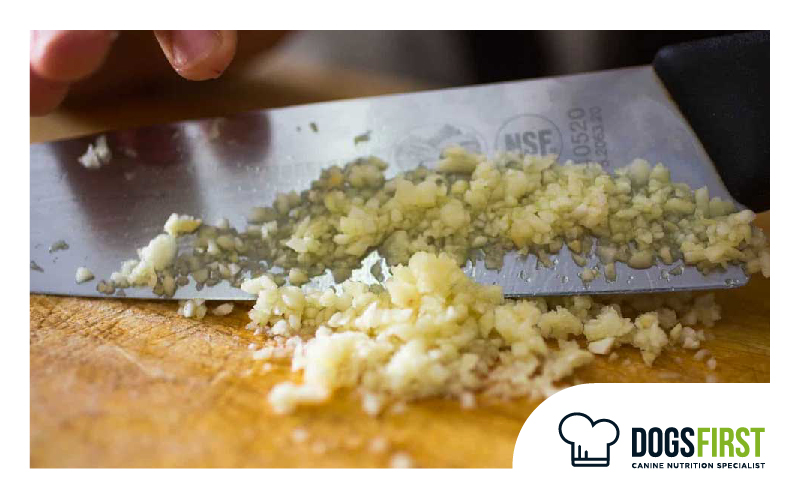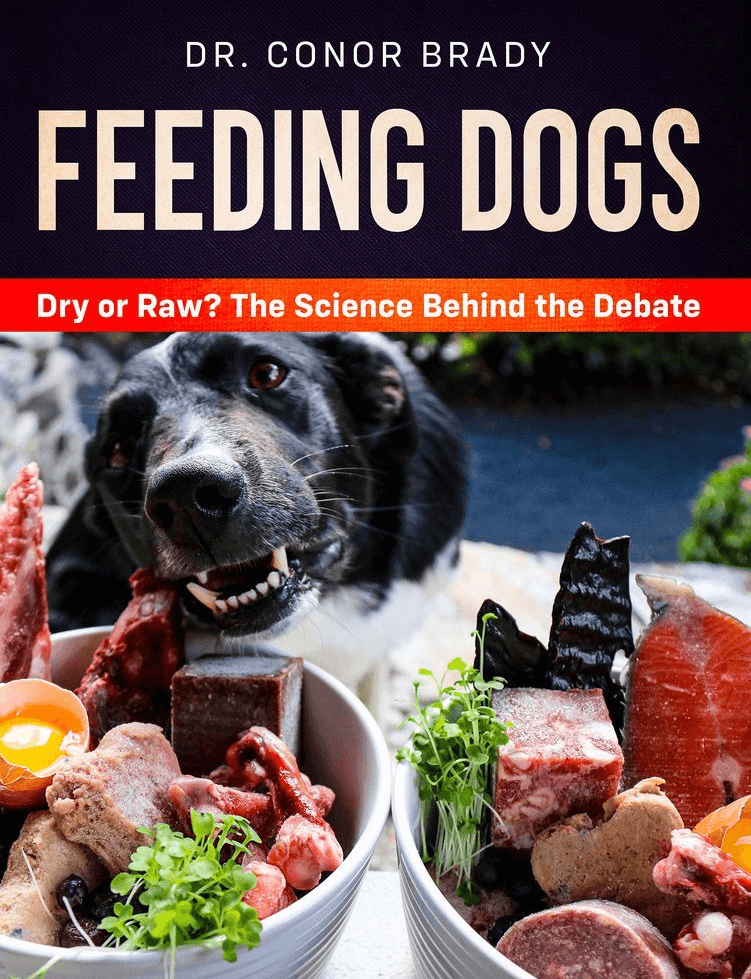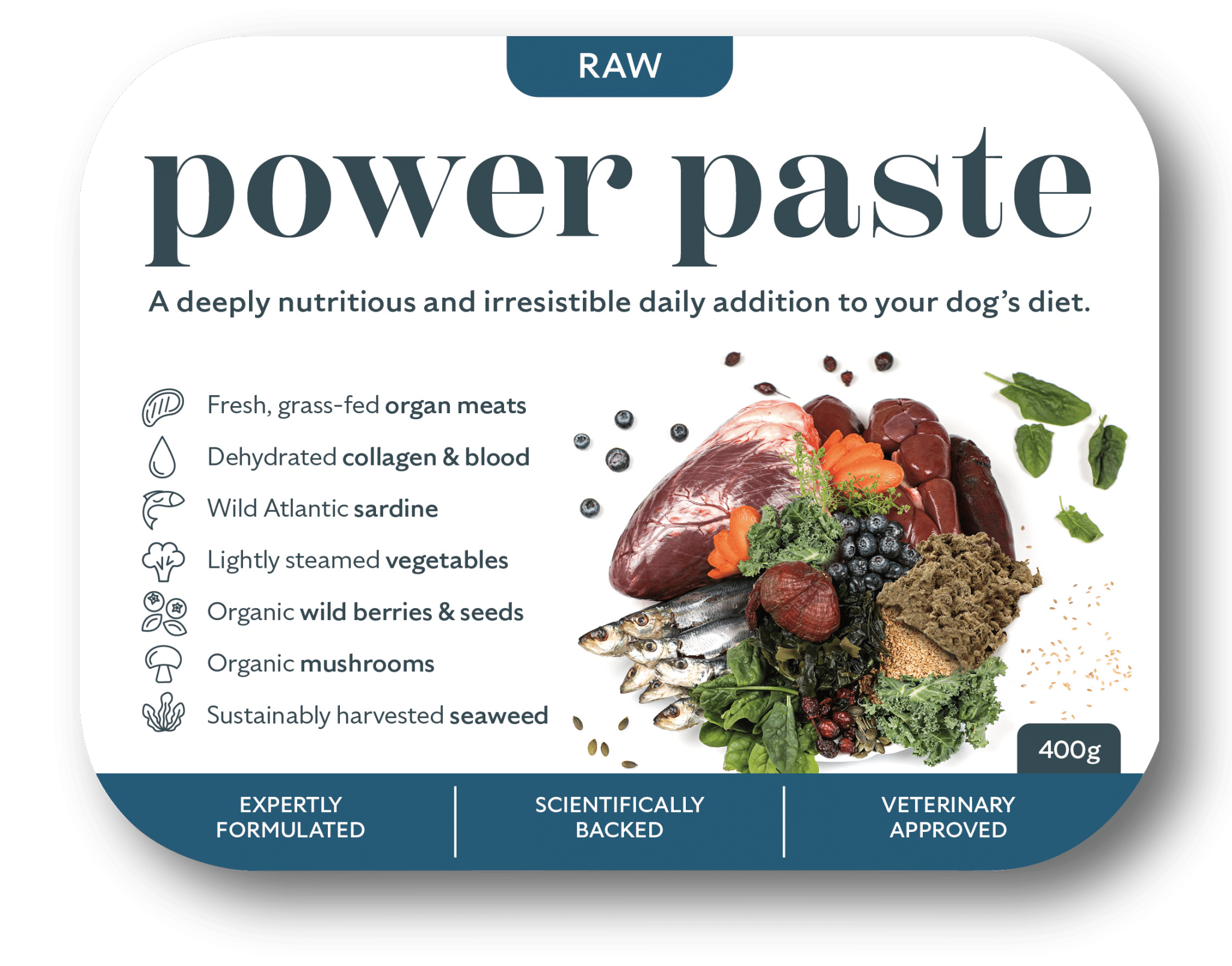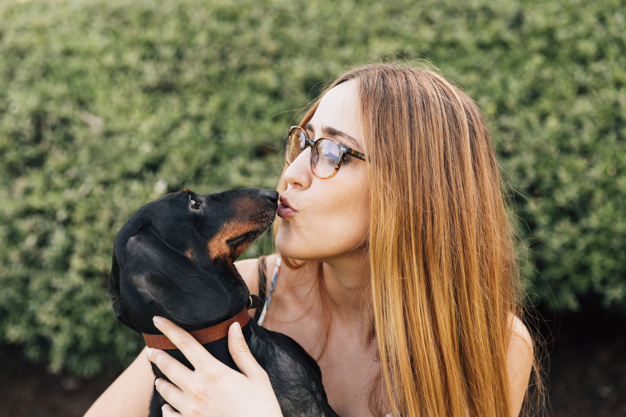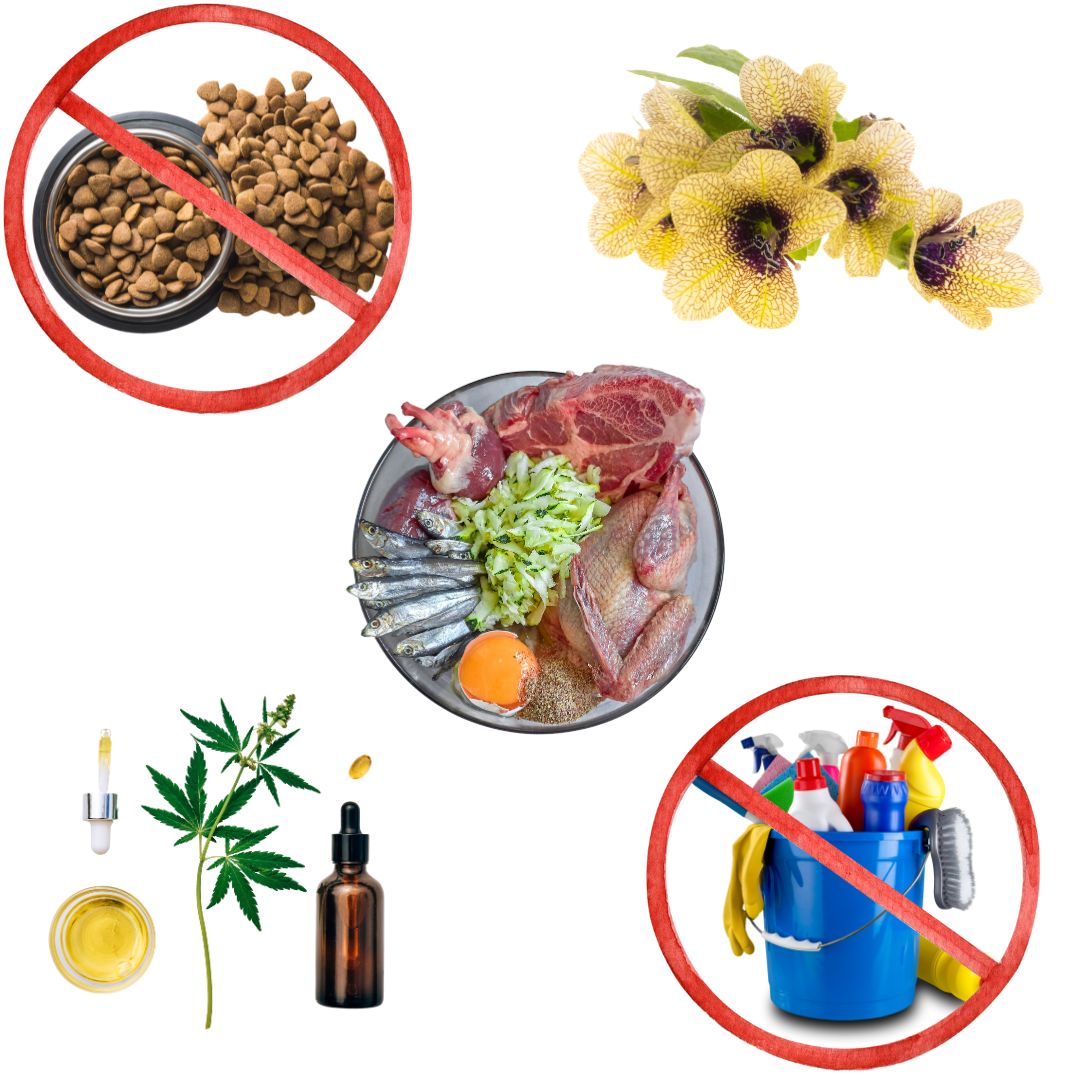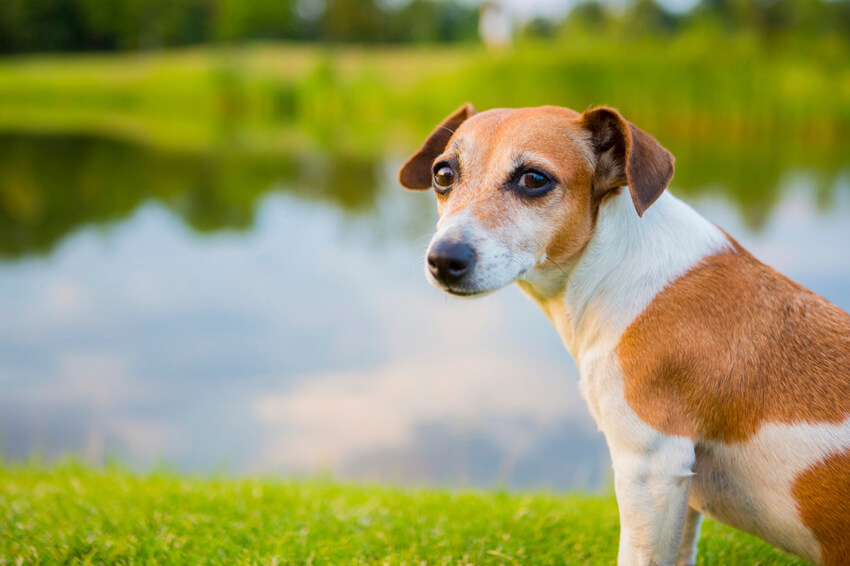Is garlic unsafe for dogs, or is it just a myth?
As a pet owner, you must have seen countless lists that labelled garlic as poisonous for dogs. The concern is echoed around veterinary clinics the world over. This is pretty surprising since very early on I realised there is nothing in the literature to indicate garlic to be toxic for canines.
In fact, just like nettle and turmeric, the evidence suggests raw garlic in small doses should be considered something of a medicine to dogs.
Today I’ll cover everything you need to know about feeding garlic to dogs. Specifically, I’ll be covering:
- Benefits Of Raw Garlic For Dogs
- 5 Ways Garlic Can Help Your Dog
- Why Dog Owners Avoid Garlic?
- Flawed Research That Caused The Misunderstanding
- How Much Garlic Can Dogs Eat Daily?
- Can You Feed Your Dog Garlic Bread?
- Or Garlic Supplements?
- How To Prepare Garlic For Dogs?
- Cautions While Using Garlic For Different Pets
- Garlic Poisoning
General Benefits Of Raw Garlic For Dogs
Garlic (Allium sativum) is a vegetable that belongs to the Alium family, the same family as onions, chives, leeks, and shallots (in there lies much of the confusion, which we will discuss later).
For centuries, garlic has been used to flavour food but also cure various ailments in both humans and animals alike. Ancient Egyptians regularly fed garlic to the slaves to boost their immunity; Chinese doctors and Native Americans frequently used garlic to treat diseases ranging from scurvy to earache.
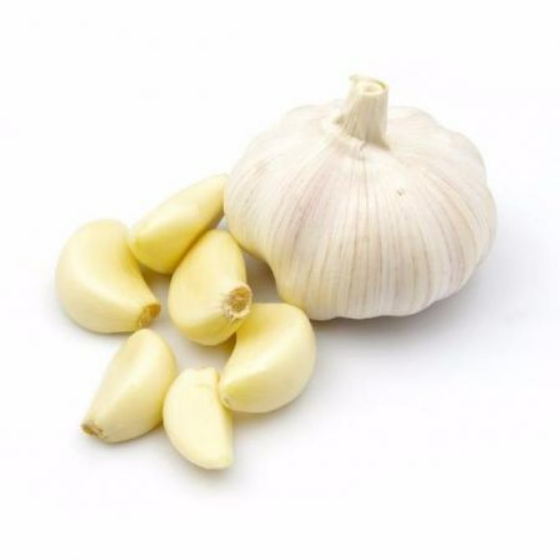
Garlic is rich in various nutrients including minerals such as Sulfur (that’s much of the smell garlic gives off), Zinc, Potassium, Magnesium, Manganese and vitamins including A, C, and B-complex. While most of these play their own role in detoxifying the body, it is the fact garlic contains the bioactive ingredients Allicin and Ajoene, that it gets its fame as a near-medicine.
Studies have found these compounds to be anti-cancer as well as lower blood sugar and cholesterol. Most have heard it’s “great for the blood” that’s because it has been used to not only fight various blood infections but also reduce blood pressure. It is a strong cardiac and muscle relaxant, acting as a vasodilator (enhancing blood flow) and hypotensive agent.
This video down below gives a detailed explanation of the extensive range of benefits of Allicin. There’s a second part as well.
Here are some of the well-established benefits of raw garlic, albeit the studies are largely of humans. However, we expect to see most if not all of the advantages* in canines too.
The benefits are:
- Antibiotic, antifungal, antihelminthic
- Boosts immunity
- Protects against the common cold
- Reduces blood pressure and raises the levels of anti-clotting factors in the blood
- Reduces internal inflammation and lowers cholesterol that reduces the risk of cardiac diseases
- It helps reduce the effects of Alzheimer’s Disease and Dementia
- Detoxify heavy metals in your body
*There are some medicine contraindications with garlic which are expected to be similar across species as well. We mention these at the end of the article.
5 Ways Garlic Can Help Your Dog
1. Garlic For Deworming In Dogs
Raw garlic (and garlic extracts) are used by the natural veterinary community for their antimicrobial, antiseptic and antibiotic properties. But of all uses, garlic is perhaps most used as an anthelminthic (deworming agent) for pets.

Fresh raw garlic has been effectively used as a deworming agent in pigs (Lans et al. 2007, Bartha et al. 2015), ruminants (Lans et al. 2007, Bullitta et al. 2018) and cats (Ronagh et al. 2015)
.Bastidas (1969) treated a hookworm infestation in a meat-fed dog with raw garlic and tracked the mean daily larvae count (baby worms). You can see it plummets consistently to Day 10. Then they stop the treatment, and the larvae count goes straight back up again.

In this study, they concluded that garlic is more effective on baby worms. An adult worm might be more resilient to small doses of this natural anthelminthic. So it is recommended that you should keep feeding garlic daily (dosage below) for at least 14 days until the adult dies off, or combine garlic with other natural anti-helminthics that do work on adult worms.
In another study, Andrei et al. (2011) noted a 90% reduction in larvae count per gram of faeces for all 6 worm species (including various roundworms, hookworms and whipworms) following a twice-daily, weight-dependent dose of their natural deworming concoction, which included a variety of popular anthelminthic herbs, garlic and pumpkin seed oil.
2. Garlic For Ticks In Dogs
Tick bites are a common concern for humans and dogs alike. Garlic is often used to repel ticks in pets as research suggest it has anti-tic qualities in human. A study of 100 Swedish Marines revealed that consuming raw garlic significantly reduced tick bites among the soldiers. Though it’s the sulfur in the raw garlic that seeps through the dog’s skin to eliminate those pesky insects. It takes a couple of weeks before working, so it’s recommended to start feeding small doses of garlic before the tick season starts.

3. Garlic For Fleas In Dogs
For garlic’s effect on fleas, a group of researchers in India used large amounts of crushed raw garlic to surround a variety of test dogs. This study used nearly 1 pound of crushed raw garlic around the dogs’ 3ft x 2ft enclosure every 2nd day for 30 days. The preventative effect of garlic on fleas was undoubtedly seen (though less recommended for those indoor dogs!!).
There are also works discussing how effective a flea repellant raw garlic is when applied topically to the ears of cats and dogs.

Not that we recommend you spend too much time worrying about fleas on dogs if your dog doesn’t have them! It’s like medicating a child for the nits she doesn’t have! We wait until the issue pops up, don’t we?!
The truth of the matter is that fleas prefer weakened animals – the very young, the very old, the sick and the unhealthy. A flea issue on a healthy, immunologically robust dog is an infrequent occurrence. Most pet owners go their whole life without seeing a single one.
That is why I recommend steering clear of those nasty chemical flea repellents on your dogs until you spot one. If you do find one or if your dog has compromised immunity and other underlying health issues, you might want to invest in some natural solutions for treating dog fleas such as Dermadog.
Billy No Mates! is good too, a tick and flea repellant. You have to start feeding it a month before the tick season starts.
4. Garlic For Ear Infections
Ear infections in dogs are a pretty common occurrence for pet owners. And garlic oil is a fantastic natural solution to prevent and treat dog ear infections. It will get rid of all sorts of infections including yeast, mites, bacteria, anything that moves really.
The most effective garlic oil has mullein in it (a natural anti-inflammatory). Just soak a cotton swab in the oil and squeeze it into the ear of your dog twice daily. If he lets you, massage just underneath the ear as we want to get a drop or two right down to the end of that canal!
5. Garlic For Widening Blood Vessels
As well as being a vasodilator, garlic can prevent blood clots, two things that can significantly help dogs with heart conditions but please, always consult with your (natural) vet first.
Why Do Dog Owners Avoid Garlic?
With all these benefits, why is it people think garlic is unsafe for dogs?
This stems from the fact that garlic belongs to the same Allium family as onion, leek, chive, and shallot. All of these latter contain a variety of sulfur-based compounds but it’s only onion, leek, chive, and shallot that contain a lot of the worrying compound thiosulfate, a compound that is toxic for canines (but not for humans).

When ingested in a large amount in canines, this thiosulfate causes oxidative damage in red blood cells, resulting in “Heinz Bodies” that the body rejects and expels from the bloodstream. Over time this can result in Hemolytic Anemia and may even cause death.
Symptoms of hemolytic anaemia in dogs include diarrhoea, rapid breathing, loss of appetite, weakness, vomiting, and dark urine.

Flawed Research That Caused The Misunderstanding
While there are abundant studies that prove onions are indeed toxic for dogs and cats, the same cannot be said for the studies of garlic. The only study that I can find that kicked off this misunderstanding in the first place was an over-dose study.
It involved 8 poor, caged labradors and used the equivalent of 5g raw garlic per kilo of the dogs’ body weights and conducted this study for 7 days. To give the figure some context, if they were using 20kg dogs, that would be 100g of raw garlic or 20 whole cloves for each dog per day. Truly awful stuff.
We have to keep in mind that this enormous amount of garlic was ingested for the sake of research. But, while the dog’s blood parameters went south for sure, not a single dog developed hemolytic anemia. And the final verdict was that this amount of garlic ingestion in that limited timeframe might cause hemolytic anemia.
This overwhelming amount of garlic should barely be used on elephants, let alone dogs. That sort of flawed research bears no relevance to the medicinal recommended doses of raw garlic in your dog’s diet.
When you look into the onion studies, you can also find resemblances. For instance, it was found that Japanese breeds such as Akita Inu and Shiba Inus’ are particularly susceptible to Allium poisoning. But the two studies used to support this claim used a LOT of onions, reaching up to 200g of onions for each dog per day.
But this does not disregard the threat of onion at all. Onion indeed is highly harmful to dogs and cats. So never feed any foods contaminated with onion to your dogs.
How Much Garlic Can Dogs Eat Daily
Below are two ways to measure how much garlic to give your dog. Please note, don’t begin on the full dose. Start off with a small amount and work your way up.
Maybe your dog doesn’t like it? Caroline Ingraham, of Zoo Pharmacognosy fame, recommends leaving it to the side of the bowl. If they want it, they’ll take it, which they usually do, particularly if they need it, as Caroline says.
1. Recommended Garlic Dose Using Measuring Spoons
By using a regular measuring tsp, include the following amount of raw garlic per day to your dog’s diet according to its weight in pounds.
- 5 lbs: ⅙ tsp
- 10 lbs: ⅓ tsp
- 15 lbs: ½ tsp
- 20 lbs: ⅔ tsp
- 30 lbs: 1 tsp
2. Recommended Garlic Dose Using Cloves
Clove sizes naturally vary from one another, so using garlic cloves as a measurement is subjective, but here it is:
- 10-15 lbs: ½ clove
- 15-40 lbs: 1 clove
- 40-70 lbs: 2 cloves
- 70-90 lbs: 2 ½ cloves
- 100 lbs+: 3 cloves
For consistency and proper dosing, I’d recommend using the measuring spoon method. If you’re concerned, you can always have a chat with one of us before including garlic in your pet’s diet.
Can I Feed My Dog Garlic Bread
You might think that feeding your dog a loaf of delicious garlic bread will be fine, and your dog will undoubtedly love so. But you have to consider that garlic bread contains very little garlic and a lot of butter, oil, cheese and other herbs.
While the tiny amount of garlic may fulfil your dog’s recommended dose, the large amounts of gluten, empty calories and processed fats in garlic bread will surely offer more harm than benefits to your pet.
Can I Feed My Dog Garlic Supplements
I always recommend feeding your dogs fresh and raw garlic since that has the maximum benefits. Dried garlic supplements are rarely shown to be effective and chemically produced garlic supplements may cause more damage. If using garlic supplements in your dog, aim for garlic extracts.
How To Prepare Garlic For Dogs
Fresh raw garlic is the best way to include garlic in your dog’s diet daily to boost its immunity. To do that:
- Always use fresh and organic garlic. Avoid canned (cooked) or processed garlic found in the local supermarket as they can contain preservatives for extended shelf life.
- Peel the garlic and then mince, chop or crush it. Use the peeled garlic within 10 minutes.
- Slowly increasing the dose over days will help your dog to get used to the taste of garlic.
- If your dog doesn’t like the taste of raw garlic, then try adding pure garlic oil to his food
- I recommend lowering the dosage (or at least putting it to the side of his bowl) after you see improvement in whatever ailment you want to treat.
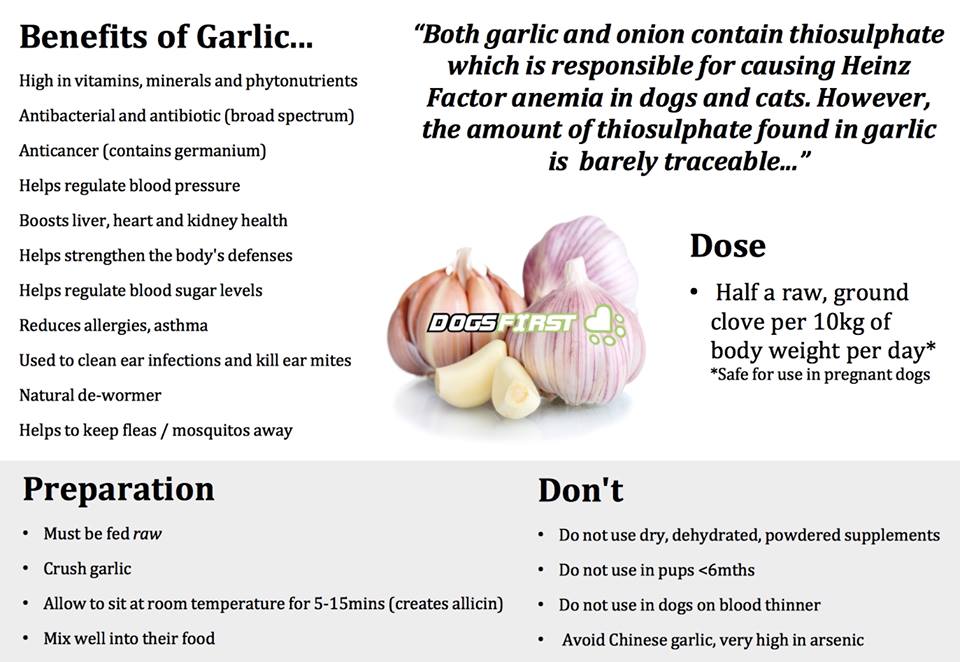
Cautions While Using Garlic For Pets
There are some instances when caution is advised when feeding garlic to dogs:
1. Puppies
Puppies under 6 months should never be given garlic as they cannot reproduce new blood cells until they are at least 8 weeks old. So don’t feed garlic to your newborn puppies and only include it very slowly when they become older than 6 months.
2. Pregnant And Nursing Dogs
I will always recommend being careful with feeding any foods and supplements for pregnant dogs or nursing dogs. Garlic can change breast milk taste and may even be passed to the newborn puppy through breast milk. So I recommend not using garlic on pregnant and nursing dogs.
3. Drug Interactions
Garlic can interact with several types of medications. If your dog has pre-existing anemic conditions, avoid giving him garlic. In fact, please do not use garlic in dogs taking any of the following:
- Heart meds
- Immune suppressants
- Chemotherapy
- Blood thinners
- Blood Pressure meds
- Insulin therapy
Garlic Poisoning In Dogs
Garlic poisoning in dogs is incredibly rare. I have never seen or heard of it. I cannot imagine a dog will sit down to 100 cloves of garlic too quickly. Much of the fear comes from the confusion above whereby pet owners believe the tiny bit their dog ate might harm them in some way, which it won’t.
Final Verdict
After extensive research, I certainly recommend feeding a small amount of garlic to your dogs now and again, ranging up to often if your dog has an issue where garlic might be helpful. If your dog has a health issue, you might consult with a vet first and then proceed accordingly.
———————————
References Not Linked:
- Andrei, S., Ilie, M. S., Mederle, N. & Darabus, G. (2011) Testing the effectiveness of a plant extract in the therapy on some endoparasites in dogs. Lucrari Stiintifice – Medicina Veterinara, Universitatea de Stiinte Agricole si Medicina Veterinara “Ion Ionescu de la Brad” Iasi, 54(3), pp. 247–254
- Ronagh, K., Gharouni, A., Bahadori, S. R., Zakian, A., Gholami, N., Rezaeian, H. & Shahraki, M. S. (2015) Effect of Nigella sativa, Allium sativum, Syzgium aromaticum and Cucurbita maxima on Toxocara cati faecal egg count in stray cats. Online Journal of Veterinary Research, 19(5), pp. 325–330.

